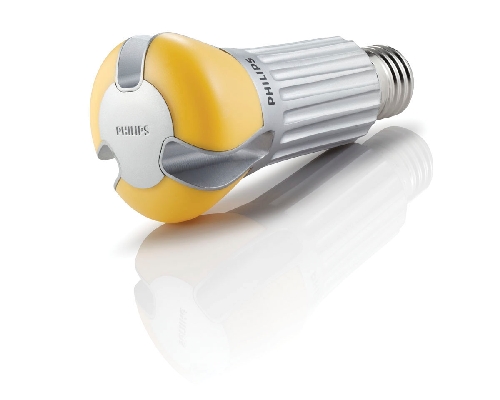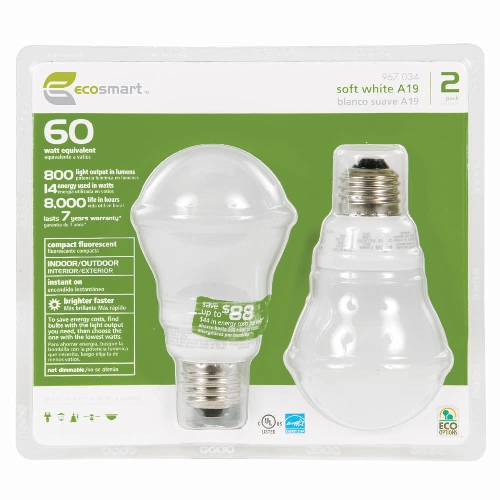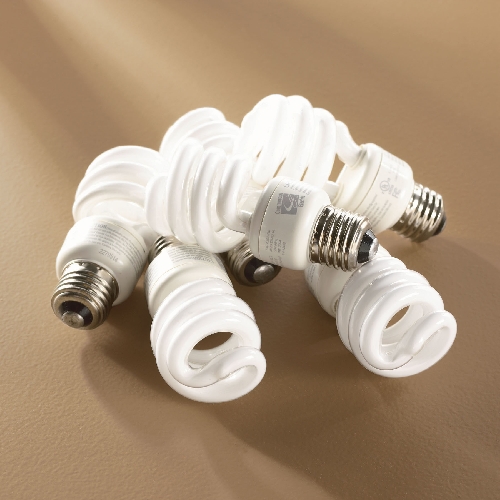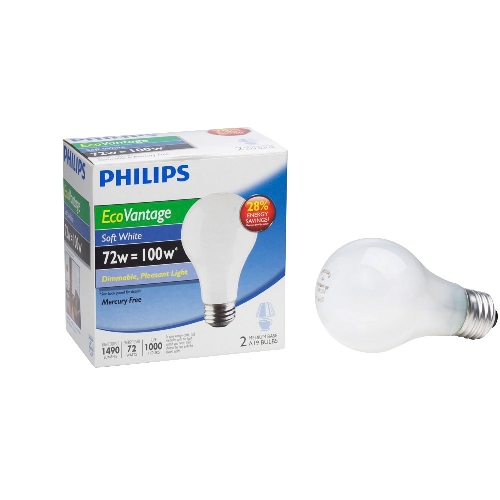Shine on
Aside from the nearly incessant nagging of parents to their children about turning off the lights when they leave a room, many of us don't think too much about what it costs to switch on a light.
And we probably give even less thought to light bulbs, except when one blows out and needs to be replaced.
Fortunately, there are experts who do and they are making light bulbs that are more energy efficient and have longer life spans. Many of these changes can be attributed to the Energy Independence and Security Act of 2007 that established new standards for lighting efficiency and took effect in January.
Although the act didn't ban outright the use of traditional incandescent light bulbs, it did require manufacturers to make bulbs that use at least 25 percent less energy, according to the U.S. Department of Energy. The standards are being phased in during a three-year period, starting with the 100-watt bulb this year. Next year mandates will affect changes for the 75-watt bulb and 2014 for the 60- and 40-watt bulbs.
Technically though, in December Congress took away funding to enforce the ban of high-energy-use incandescent bulbs as part of its spending bill. Opponents of the ban were protesting the government's limit on people's right to choose the type of lighting they use in their homes.
Despite this, manufacturers spent millions making changes to comply with the act and aren't likely to revert to the less-efficient lighting.
"Rather than taking away choices, this legislation has offered more choices than ever before," said Silvie Casanova, company spokesperson for Philips Lighting. "It spurred innovation in the lighting department to create more energy-efficient products and longer-lasting products. It is a win-win for the consumer."
Since the legislation affected production and not the use of traditional incandescent bulbs, consumers can still use them, said Alyssa Steele, an associate merchant for light bulbs for The Home Depot.
"There will be incandescents on our shelves as the supply allows. We will sell what we have on our shelves, but we do have more than 100 bulb options that use less energy than their incandescent equivalents," she said.
Casanova said consumers need to change they way they think about light bulbs. Instead of focusing on wattage, they need to think in lumens or the amount of light output by the bulb.
"Philips has LED (light emitting diode) bulbs that put out the same amount of light, but are only 10-12 watts. You get the same light as a 60-watt incandescent bulb but with an 80-85 percent savings over the traditional incandescent," she said.
The company offers everything from decorative lights for chandeliers to flood lights. Although the bulbs, particularly the LED bulbs, have a higher up-front cost, they will last about 25,000 hours, which averages between 20 and 25 years.
"If I had a baby today, when he was coming home from college I might consider changing the light bulb," Casanova said.
The Home Depot sells a 60-watt equivalent LED bulb for $24.97. The Energy Star-qualified bulb saves about $140 over the life of the bulb.
The bulb will make such a dramatic difference that the Department of Energy named it the first winner of its Bright Tomorrow Lighting Prize. It was selected because the 60-watt bulb is one of the most commonly used types of light bulbs.
"As the first winner of the L Prize, this 10-watt alternative could save the nation about 35 terawatt-hours of electricity or $3.9 billion in one year and avoid 20 million metric tons of carbon emissions if every 60-watt incandescent bulb in the U.S. was replaced with the L Prize winner," the department stated in its announcement of the prize.
Steele said LEDs offer the same color choices -- soft white, bright white and daylight -- as other bulbs and are dimmable.
"Soft white will be a warmer light experience, similar to incandescent light. Bright white is a crisper light, and daylight is brighter, like being outside; it is also bluer, kind of like a sky blue," she said.
When selecting what type of light for each room, Steele suggests soft white in the living and dining rooms, bright white for the kitchen and daylight for areas where there are a lot of tasks, such as in the garage or bathroom where women apply makeup.
In addition to LED bulbs, consumers can choose from an assortment of highly efficient incandescents and compact fluorescent lights. Steele said it is a progression of good, better and best, with LEDs being the best alternative.
For those who want an "easy transition to dip into the energy-efficiency pool," Steele suggests using Philips' EcoVantage high-efficiency bulbs. They sell for about $3. "They last two to three times as long and are 28 percent more efficient. They have the same look and feel of a traditional light bulb."
Casanova said the bulbs have a small halogen capsule over the filament, which makes them more efficient and longer lasting.
The next step up is compact fluorescent lighting, more commonly referred to as CFLs. Casanova said they have made great strides in reducing the amount of mercury contained in the bulbs, which was a significant concern of consumers when they were first introduced on the market.
"They contain only trace amounts of mercury that is necessary for operation. It is generally less than what you would find in a can of tuna and you are not ingesting it," she said.
Steele said the key things to know about CFLs is that they use 75 percent less energy and last 10 times longer, averaging between seven and 10 years. At $6.97 for a four-pack, they will pay for themselves at the six-month mark. Energy savings will be about $50 for the life of each bulb.
"Clearly it is a personal choice on which type to select, both in technology and color. Our focus is clearly on education and to have products available for when they (consumers) need them," Steele said.
For more information about the law, what changes can be expected and energy-saving light bulbs, visit energysavers.gov/lighting.
































